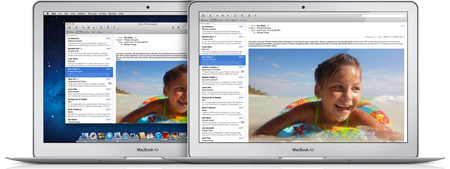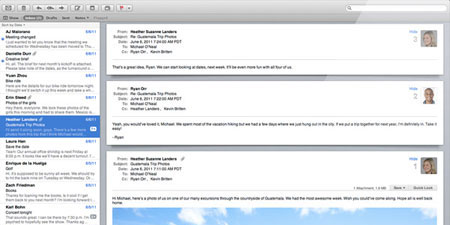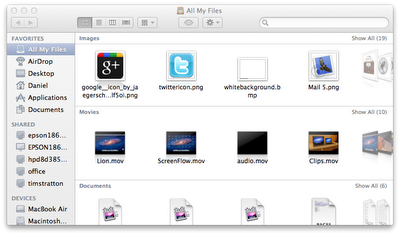Back when I was setting up my Mac, I installed Eclipse 3.7. I also installed Postgres and Tomcat so I could run locally. Postgres was either unnecessarily frustrating or it required knowledge I didn’t know I was missing. The whole shared memory thing should have been a clue. The good news is that I think I did almost everything wrong one could so I have a nice list of problems. I wrote this up two months ago, but waited to post until I understood better what was going on.
I learned I didn’t know where the applications folder is on the hard drive. First I learned you can view the path of a file in the finder. Which is all well and good. It tells me the path is Macintosh HD > Applications > Eclipse. Awesome. On a UNIX file system, a directory has a slash up front. Ok. So I’m now at a UNIX prompt looking for it. No Mac HD at the root level. Volumes looks promising so I cd there and see Macintosh HD as a choice. Great. And there’s even an Applications folder under it with my apps! I found it without having to use “find.” That wasn’t bad, but it was more surprising than I expected. I also noticed there is /Applications which will be more convenient next time.
Also, the “one click installer that doesn’t tell you what it is doing” installs some things by unzipping to the directory you are in, some files to /Library and presumably some files to who knows where. Now I see the scripts I was expecting.
initdb doesn’t have enough privileges as me so I tried root and got initdb cannot be run as root. Ok so it’s a real UNIX install where I need a user to run as. I wasn’t expecting this because all my previous installs on the Mac have shielded me from a real UNIX install.
I thought I needed to create a postgres user to run the database. In Apple’s system preferences it tells me an id with that name already exists. But /etc/passwd says nothing about it. Running
dscl . -list /Users UniqueID
does turn up a postgres id. I need to figure out how the Mac Directory Service thing works. Anyway, now that I know the postgres users exists I did “sudo passwd postgres” to reset the password to something I know. Turns out the “sorry” message when trying to sudo to postgres wasn’t from an incorrect password. Eureka! I needed to type “sudo su postgres” and then type *my* admin password to switch. Which kind of makes sense because my regular id isn’t allowed to switch user but my sudo admin user is.
I then changed owner of /Library/PostgreSQL recursively to postgres user. A nice easy step. (sudo chown -R postgres /Library/Post*)
Finally, I could run initdb and get prompted for the new superuser password!
I then tried to start the database and got a complaint the lock file already exists.
FATAL: lock file “/tmp/.s.PGSQL.5432.lock” already exists
HINT: Is another postmaster (PID 94) using socket file “/tmp/.s.PGSQL.5432”?bash-3.2$
Tried rebooting. Error still there. Turns out postgres automatically starts up. I went on to create a user and database using the usual commands.
Then I opened pgadmin to see if I could access the database.
Connected – maintenance db is database name.
Almost there. I used the wrong password for the id I created in postgres. (This matters because the coderanch integration tests assume a certain password. And because the one I picked I will never remember.)
alter user postgres with password ‘better_password’;
Importing data from file went smoothly.
Ongoing Little problems
- Copy paste from Eclipse doesn’t work. You have to go through textedit.
- Postgres uses shift arrow key to select a line. I wish Apple apps would all use the same convention.
Resources
- http://developer.apple.com/internet/opensource/postgres.html
- http://zanshin.net/2009/09/07/installing-postgresql-on-mac-10-6-snow-leopard/ – except for the building from source parts this was useful
Tomcat
Given how many problems I had with Postgres, I decided to follow a tutorial for Tomcat. This one was easy to understand. I know enough about the Mac to understand what the sudo is for (to be an admin.) And the rest is pure UNIX – permissions, making a symbolic link, etc.

 In
In  Apple originally released
Apple originally released  In
In  Over two years ago,
Over two years ago,